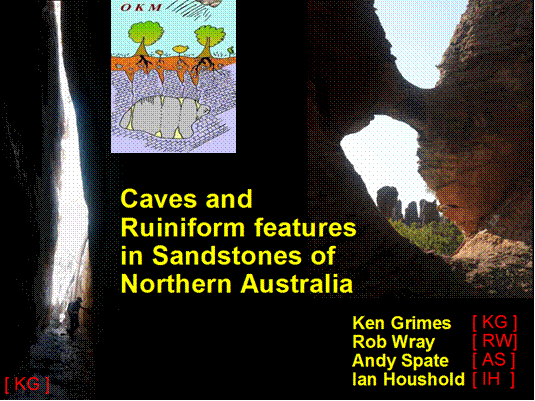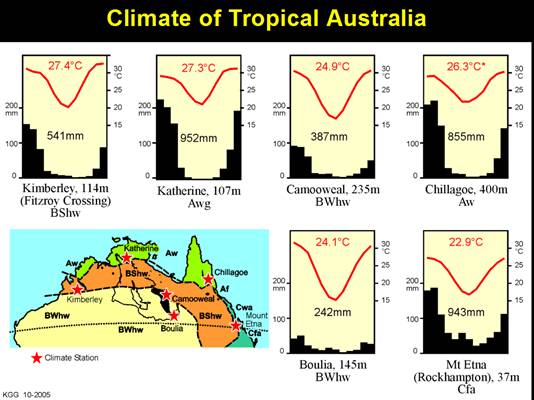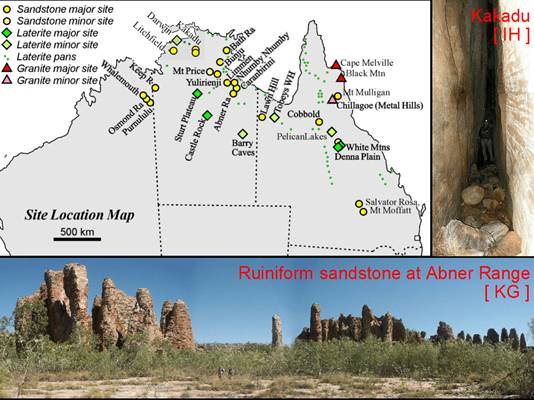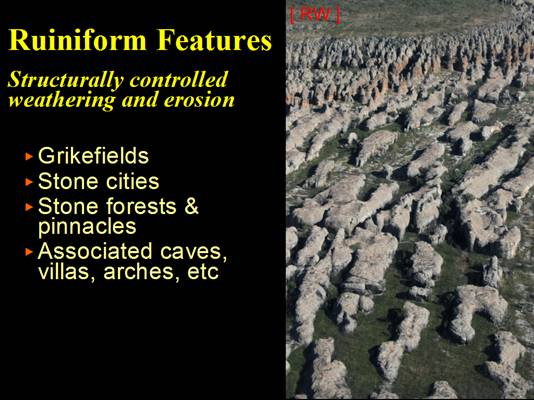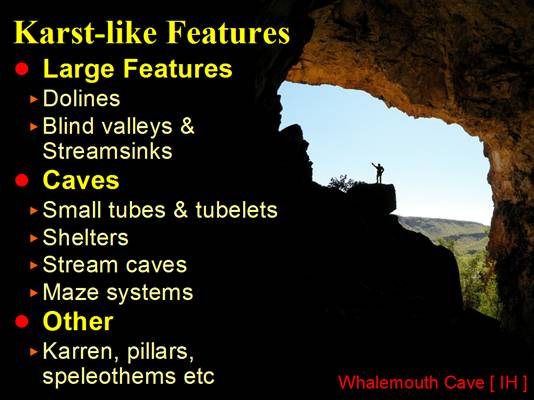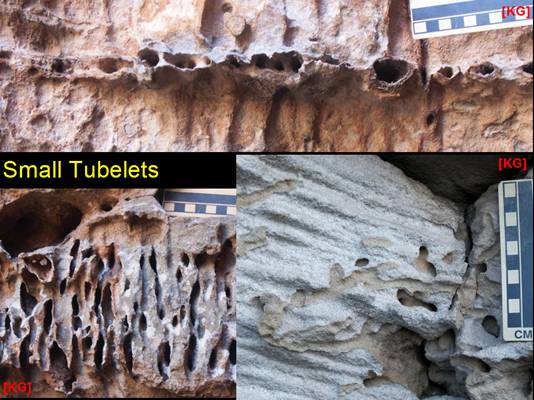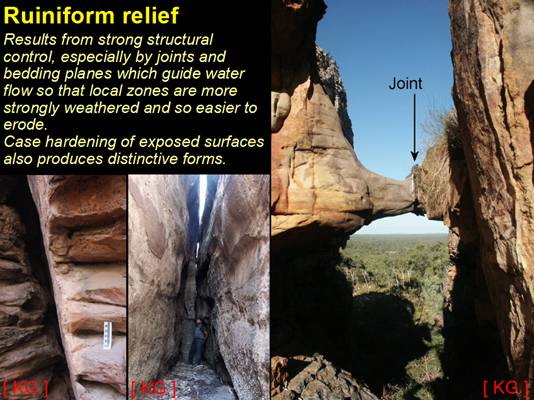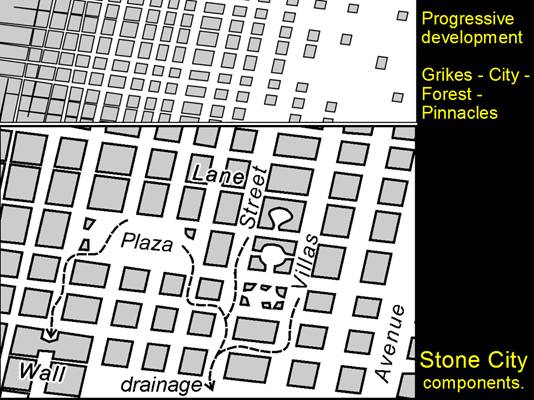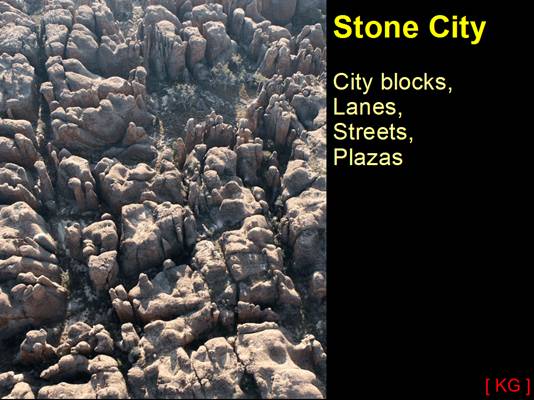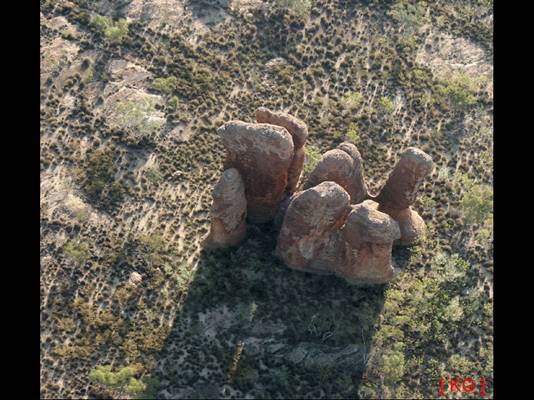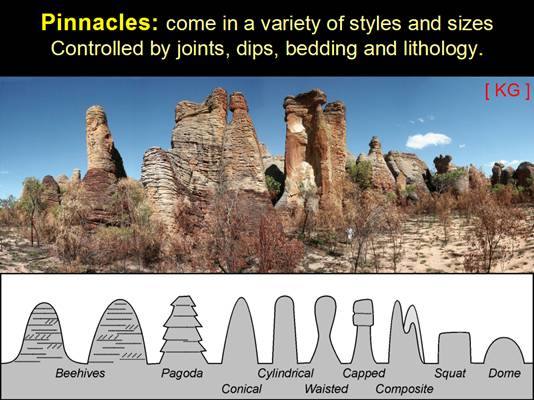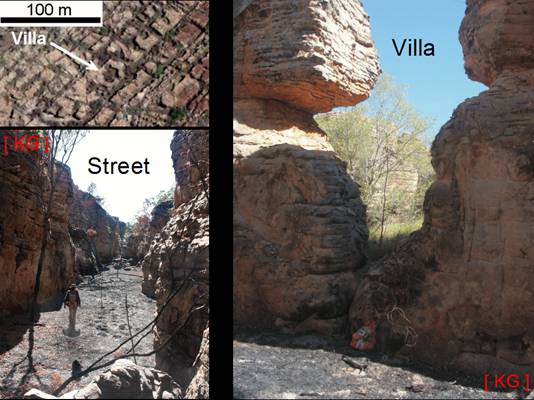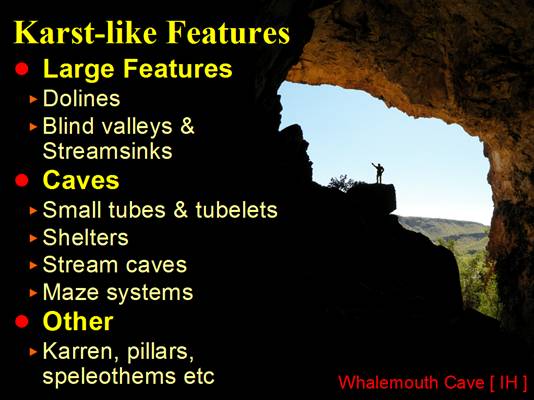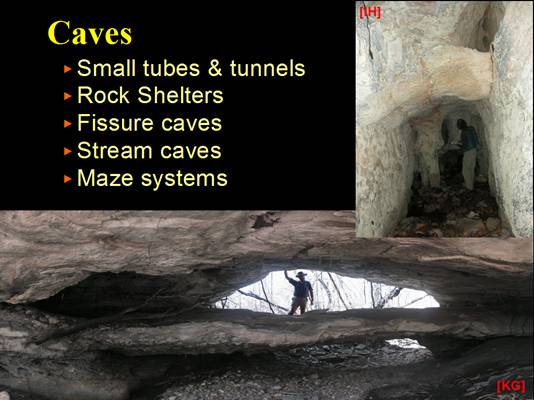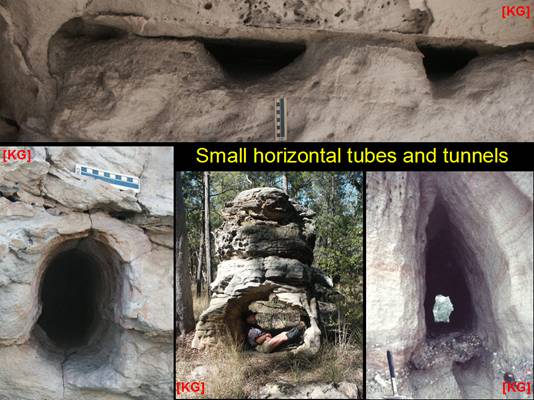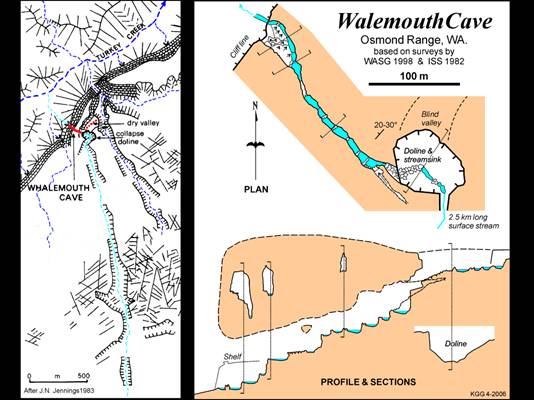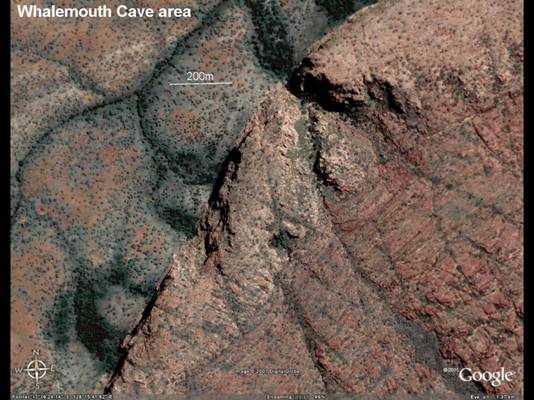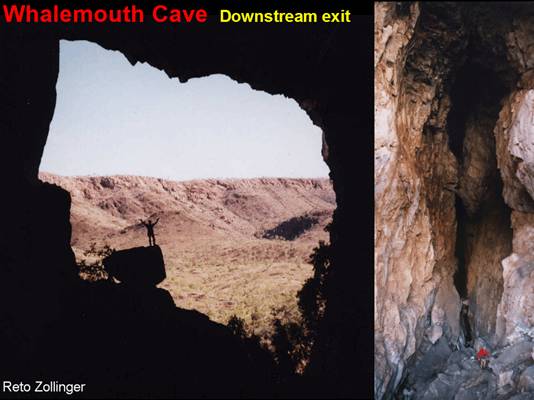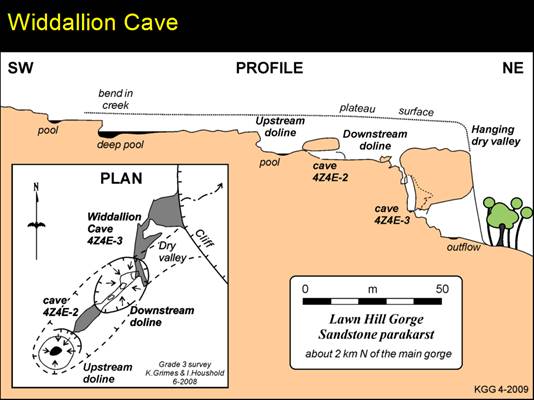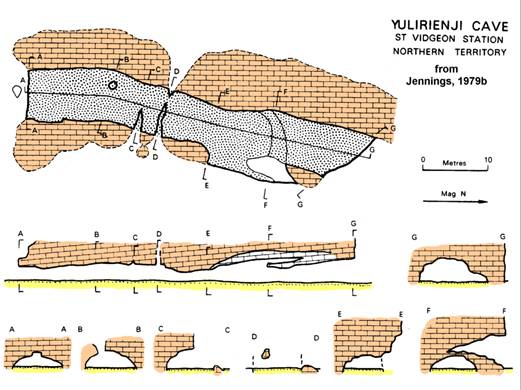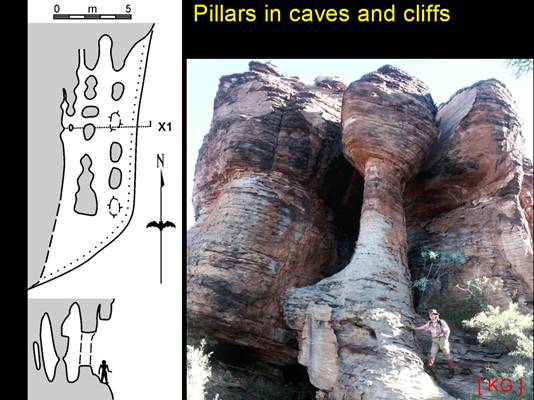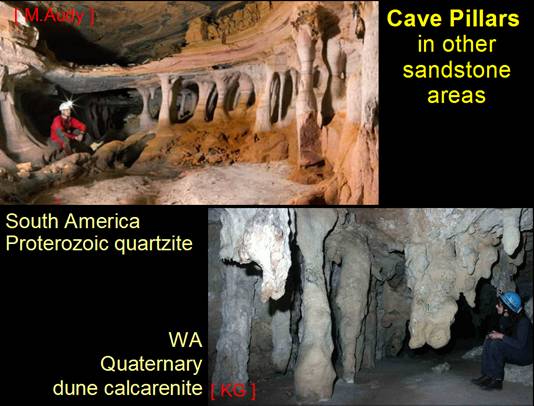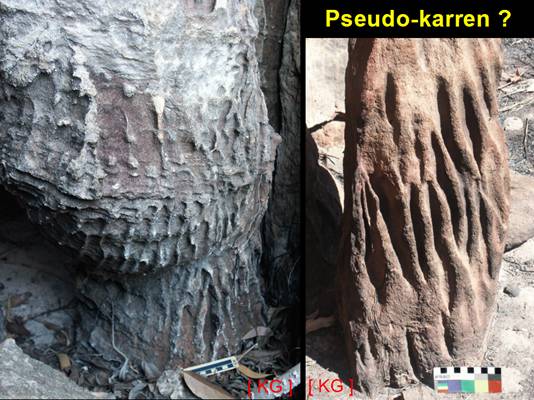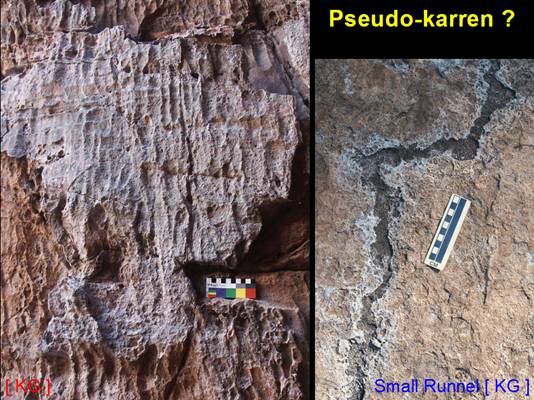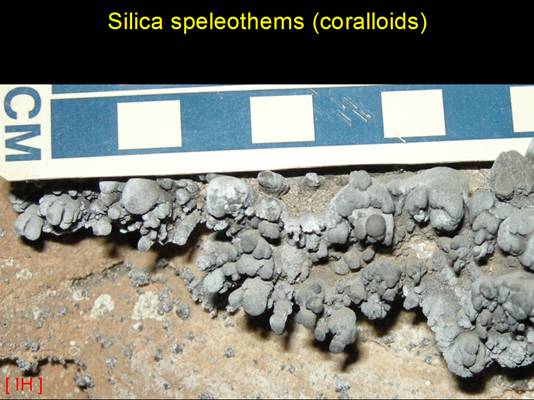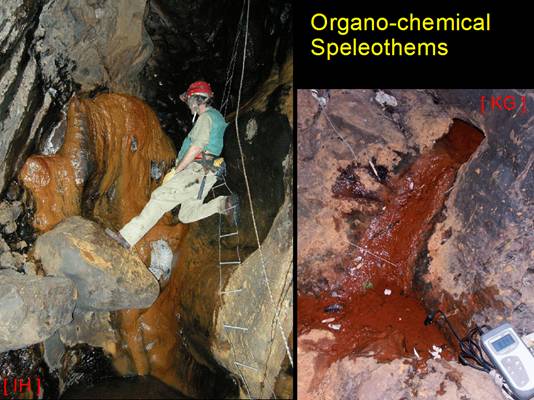Caves and Ruiniform features in Sandstones of Northern Australia
Optimal Karst Management1, Regolith Mapping2 School of Earth and Environmental Sciences, University of Wollongong3 and Tasmanian Department of Primary Industries, Parks, Water and Environment4.
Email: 1 aspate1@bigpond.com 2 ken.grimes@bigpond.com
Abstract: The flat-lying sandstone areas of tropical north Australia have a range of interesting landforms that include caves, dolines, and other karst-like features, and also spectacular ruiniform terrains. These landforms can be classed as silicate karst, parakarst, pseudokarst and non-karst (but the last have ruiniform areas that have considerable scenic and scientific interest). Caves range from small rock shelters through small tunnels and large tubes which may have dark zones, to larger stream caves (both active and abandoned) and complex maze systems. Dolines are mainly collapse or subsidence features, and some may be due to subjacent karst effects. Blind valleys and stream sinks are associated with the stream caves. Small-scale features include solution pans and runnels, sculptured walls that resemble karren, and sandstone pillars within some caves or exposed in cliffs. The pillars appear to be a type of diagenetic cementation by focussed vertical water flow.
Ruiniform features are giant grikefields, stone cities and stone forests which result from structurally controlled weathering and erosion. At the edge of a plateau developed on flat-lying sandstones one finds that erosion first attacks the joints, widening them to form grikes which grow larger and deeper to become giant grikefields. As the grikes enlarge further they widen at the expense of the higher areas between them to make stone cities. Eventually the low ground dominates and we get a stone forest and finally scattered pinnacles on a low-level pavement. Stone cities are referred to by the tourism industry as “lost cities”. These features are analogous to karst grikes, pinnacles and towers, but solution is not the main process involved. Whilst solution of silicate cement may be involved in the original weathering process (along with oxidation of iron and aluminium compounds, and clay mineral formation), the majority of material is subsequently removed by fluvial processes, or, less commonly, by wind. Grikes etc on both limestone and sandstone are best classed as ruiniform, rather than “karst-like”, as the structural control is more important than the processes of chemical and physical weathering that are involved.
Many important sites have developed in Proterozoic sandstones and quartzites. Whalemouth Cave in WA is a particularly large and spectacular stream cave in sandstone. On the plateau above the cave several blind valleys and stream sinks can be seen from the air. In the NT there appear to be large and complex horizontal maze cave systems at Kakadu and possibly at Bunju, but these have not been studied in any detail and access is difficult. Also in the NT, large collapse dolines, some with water-table lakes (i.e. cenotes), occur in sandstones of eastern Arnhem Land, near Borroloola and on the Newcastle Range in the Gregory/Judbarra NP. Again, access is difficult and the genesis is uncertain as the host sandstones either have a carbonate cement or are underlain by limestone units. In Queensland, Widdallion cave in the Lawn Hill (Boodjamulla) NP is a stream cave similar to, but much smaller than Whalemouth. Further east in Queensland, Mesozoic sandstones have a range of features. A surface stream within the grikefields of Cobbold Creek Gorge has several underground segments. In the sandstone ranges of central Queensland there are many rock shelters, and also large tubes and small tunnel caves. The main interest there is in the extensive small horizontal tubes, and three-dimensional networks of smaller tubelets, even though they are too small for human access.
